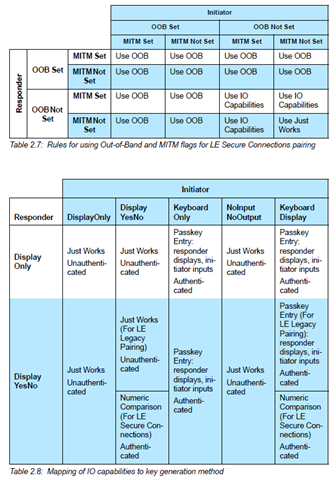Hi,
I'm implementing a BLE GATT peripheral that has no display but it does have a button.
I'd like to make some characteristics only available to devices that are BONDED but all of the docs I've read so far talk about pairing, or what I think are equivalent words like "encryption" or "authentication".
E.g. I've found flags like BT_GATT_PERM_WRITE_LESC|BT_GATT_PERM_WRITE_ENCRYPT and some doc about whitelisting, but the descriptions of both suggest they're only looking at the current connection, not whether the connection is to a device from the bond list. And I can't add BT_GATT_PERM_WRITE_AUTHEN because it's got no display.
Anyone have any pointers how to do this? Or am I just misunderstanding the doc?
Seems like I should say why, in case there's another way to do a similar thing.
I don't actually care about MITM for this - it's a wearable and I really only want to make it harder for some random to flatten the battery. Sure MITM could do that but it'd be noticed and they'd have to follow the person constantly.
So really I only care whether whether I'm currently connected to the phone (or potentially MITM) the nRF was bonded to. Plan is to use JustWorks but only allow a bonding to occur for a short period after the button was pressed.
But let's say I've already been through the bonding process with some phone but that phone's now out of range and disconnected. If another device comes along I believe it could initiate a pair and create a link with encryption (but not authentication) but stop before bonding without the user even knowing it happened. It sounds like this would be a gap in the security, even though it doesn't seem actual phones do this.
Thanks,
Bill



